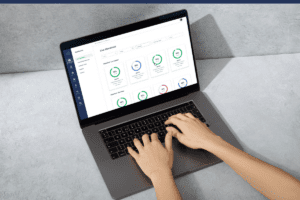Four Ways To Ease The Impact of Inflation at Career Education Schools
We’ve all felt the sting of inflation at the grocery store and favorite restaurants.
Unfortunately, it’s also impacting schools. According to a recent survey of 150 career education professionals, increased operating costs have emerged as a top-three challenge for 2023.
The cost to operate a higher education institution increased by 5.2 percent in the fiscal year 2022, a substantial increase from the 2021 inflation rate of 2.7 percent. This is the highest increase since 2001, when it hit 6 percent.
While many costs are fixed—you can’t exactly forego electricity—there are a few things schools can do to mitigate inflation and protect the bottom line.
Here are four ways to help ease the cost of inflation on your school.
Improve start rate
Schools spend between $429 and $623 per enrolled student annually on marketing. You invest in students before they even enroll in your program, and once they do enroll, your spend goes up from there.
You staff your school appropriately for the number of enrollments and ensure you have the correct number of tools in the hands-on environment. So when they don’t show up on day one, you’re out both the tuition dollars you planned for and everything you’ve already invested in the student.
Improving start rate will protect your initial investment in students and ensure that your school gets the tuition dollars that you budgeted for. One way to do this is by automating day-one communications. Automation ensures that students are being contacted frequently enough while also removing the burden from your staff. Instead, your staff can focus on supporting the students who need extra help.
But if you don’t already have the automation tools, is spending money on new tools counterintuitive? Let’s dive in.
Invest in software and automation
Between increased operating costs, staff retention efforts, and enrollment declines, schools are stuck between a rock and a hard place regarding budget allocation. While it may seem counterintuitive, investing in software is one of the best ways to reduce operating costs.
Consider how much time your staff spends on manual administrative tasks. For example, one school estimated they spent a minimum of $215 per student on manual labor like attendance tracking and grades management.
Data delays and manual management also cost schools by:
- Delaying intervention with at-risk students resulting in higher attrition and tuition loss.
- Opening up compliance risks like late R2T4 calculations that could result in hefty fees and findings.
- Reducing admissions efficiency, decreasing the likelihood of future starts making it to day one.
Software helps you do more with less to save money on manual tasks. Your team gains more time to focus on higher-value tasks without adding additional positions. You can also reallocate positions that previously did manual work to higher-value tasks.
For example, when one career education school implemented CourseKey to automate its operational processes, it repurposed 520 hours annually from attendance reconciliation, equating to $10,400 in savings. Now, its two attendance coordinators support retention and intervention with at-risk students. The same school also removed 866 hours annually of administrative work from instructors, saving approximately $17,333.33 and giving instructors time back to focus on what they love, coaching students. At another five-campus school, CourseKey saved $40,000 in manual grades/skills management annually at each location.
But this being said, software isn’t the end-all-be-all solution to every problem. And if not chosen correctly, costs can add up and may not provide equivalent value.
Before you do any investment, you should…
Audit your tech stack
Before investing in new technology, consider what you already have and ask:
- Are you still using everything you pay for? And is it providing value?
- Are you using multiple point solutions, like a survey, retention, and attendance tool from different companies?
Often, schools will invest in a point solution to solve a specific problem at one particular point in time. But ultimately, too many point solutions often end up causing added technology challenges if they don’t communicate with one another. For example, if your retention tool isn’t automatically pulling in data from your LMS, it isn’t acting on the most timely or accurate data.
Additionally, the cost of different point solutions can add up fast. So when you audit your technology stack and consider your goals, review the providers you’re working with. For example, does your attendance tool also offer surveys? Often, when you bundle solutions from one technology provider, you get a discounted rate.
Implementing new technology can reduce operational costs in the long run, but only if done thoughtfully and centered around the entire tech stack. You may find that you can replace multiple vendors with one vendor for a better rate and more efficient operations.
Improve retention rates
When a student drops, it’s a lose-lose for everyone. They’re left with debt and no certificate, and you lose out on the tuition dollars you planned for. When too many students drop, you’re also open to costly compliance risks.
In a recent survey, schools said they planned to improve student retention by adding more classes/instructors and upgrading facilities. Both of which require a significant upfront investment.
For a lower investment approach, other schools are starting by improving student communication and leveraging automation tools. When you audit your technology stack, consider what tools you’re using for communication and intervention. Are they timely and accurate? Are they impactful? If not, consider exploring a different tool before shelling out the cash on shiny new facility upgrades.
Long-term success with CourseKey
CourseKey helps schools reduce manual data management, automate retention and intervention, and streamline their technology stack to reduce vendor contracts.
Request a demo to learn more.
Recent Articles

















